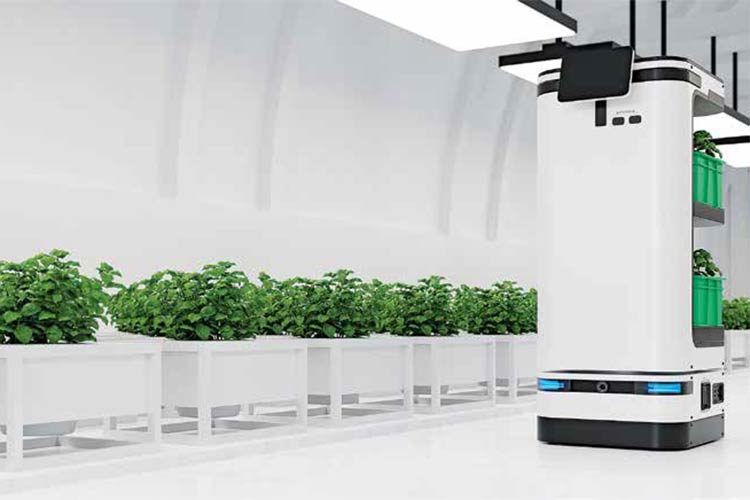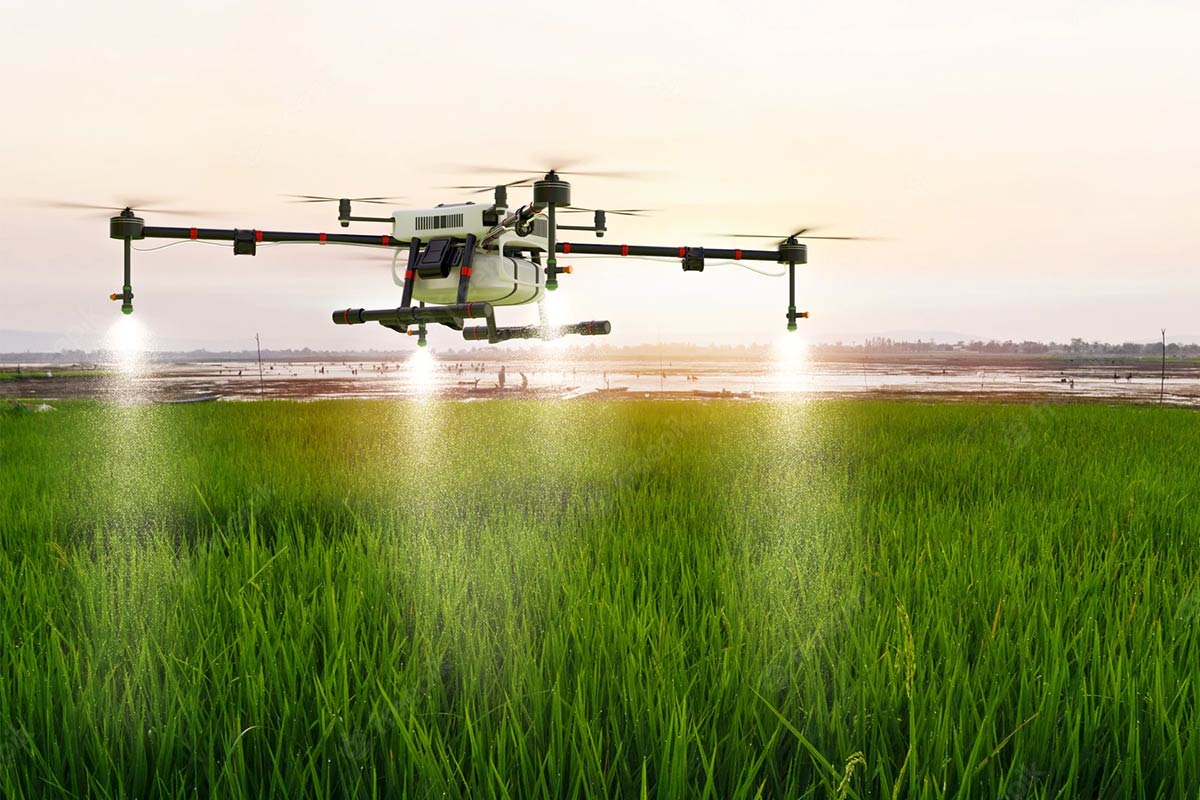Six decades after the Green Revolution began, the rise of robotics and artificial intelligence may usher in another agricultural transformation. By enabling farmers to grow more while using fewer resources and generating less waste, these tools could make food more sustainable, accessible, and cheaper to produce
Arming is one of the world’s oldest and most far-reaching endeavors. Meeting the growing food demands of the global population – projected to reach ten billion by 2050 – amid accelerating climate change presents an unprecedented highwire act that requires human ingenuity, good governance, and technology.
The last time the agriculture sector went through a seismic shift like this was when new technologies, such as highyielding wheat and rice seeds, chemical fertilizers, and irrigation technologies, kicked off the Green Revolution in the 1960s. In the following three decades, cereal production in famine-prone Asia doubled, and wheat and rice became cheaper, even though the population increased by 60% during this period.
Unfortunately, the Green Revolution brought with it a host of environmental costs. Lax regulations and generous subsidies made fertilizers and pesticides cheap, and farmers, with no training, used them excessively, leaving soil damaged and waterways polluted. As new crops took over, traditional plant varieties were lost, contributing to biodiversity loss.
The rise of robotics and artificial intelligence might help usher in a second, even greener Green Revolution. Robots are already harvesting crops, weeding, and collecting data to improve soil management. Soon, they will be as common in farm pastures and greenhouses as they are in medical labs or Amazon warehouses. The hope is that AI can help meet food and climate goals by adding more precision to agriculture, thus allowing farmers to grow more and waste less.
AI-powered programs, like IBM’s Watson, combine data on weather patterns, crop yields, and market prices to advise farmers regarding the best time to plant, the precise amount of fertilizers to use, and when to harvest for peak ripeness. Researchers at Microsoft and Wageningen University in the Netherlands are growing cucumbers with the help of algorithms, combining the efforts of humans and AI to boost yields while using fewer natural resources.
In California, a state that grows irrigated fruits and vegetables at a large scale, such technologies mean real savings in seasonal labor requirements. For example, a $150,000 “grape-gobbling robot” can sort two tons of grapes in 12 minutes, replacing 15 human workers – as well as reducing the use of fertilizers, pesticides, and water, while producing higher yields.

In the past, agricultural automation was characterized by large industrial farms using heavy machinery to boost yields. Mechanization on this scale increased producers’ dependence on fossil fuels and the unbridled use of chemicals. The steep cost also meant that small farmers, especially in poorer countries, lacked access, creating an uneven playing field.
Digital technologies are changing this to benefit both large-scale and small-scale farms. Farmers have taken a page from ride-sharing apps like Uber, using GPS tracking devices and fleet-management software that allows small producers to share assets required for agricultural mechanization. Some companies, like TROTRO Tractor in Ghana and Tun Yat in Myanmar, allow small farmers to share the cost of renting a tractor they could not afford alone.
Digital support can also upgrade traditional mechanization, even if it is not advanced technology. For example, GPS devices that track cattle (“smart collars”) and transmit data about animals’ health and movements can determine the amount of feed to dispense and automate the feeding process, improving productivity.
The hope is that AI can help meet food and climate goals by adding more precision to agriculture, thus allowing farmers to grow more and waste less
The great advantage of robotics is its potential for cost-effectiveness, allowing small farmers to compete with their larger counterparts. Like computers and smartphones, these machines, once manufactured in large volumes, should become much less expensive, thus paving the way for wider use.
But robotics and AI-based tools, which favor highly skilled farmers over low-skilled ones, have the potential to deepen existing inequality. They could further alienate the world’s poorest people, especially those who live in rural areas and eke out a living on a small plot of land without access to markets or financial services.
To ensure that agricultural automation, from tractors to drones, is inclusive, governments should invest in essential infrastructure, including electricity and broadband connectivity in rural areas. They should also provide training on these digital tools to create a new class of skilled farmers who can operate more advanced technologies – and can create new, high-skill opportunities for rural youth.
To be sure, technology alone will not right the world’s wrongs when it comes to delivering food more sustainably or making farming more efficient and equitable. Nor can it transform agriculture overnight. From California to Kenya, robotics and AI are still expensive and tend to favor larger farms over smaller ones. Moreover, greater use of robotics could encourage the expansion of monoculture farming systems, as robotic machines require uniformity to function efficiently. That would lead to a loss of genetic diversity.
Robotics and AI in agriculture are still at an early stage of development. Thoughtful policy and rigorous impact assessments of its adoption are required to realize the Second Green Revolution’s full potential.
Robots are not substitutes for human farmers. But in a future with billions of extra mouths to feed, they can make food more sustainable, available, and cheaper to produce. It’s high time to give machines a chance.
By Maximo Torero, Chief Economist of the Food and Agriculture Organization of the United Nations
